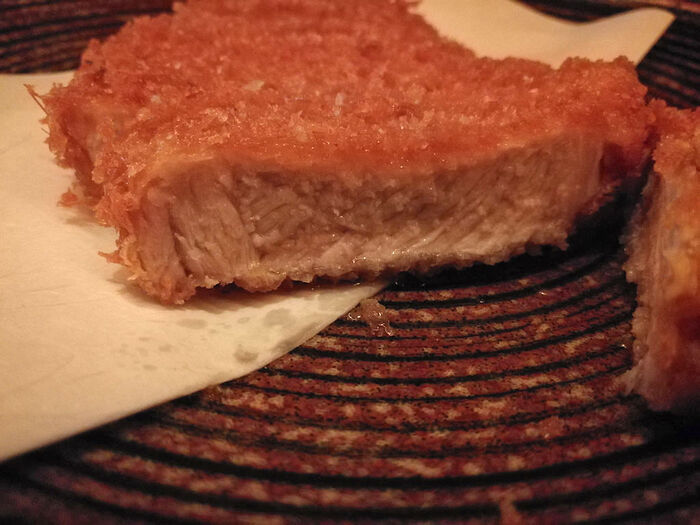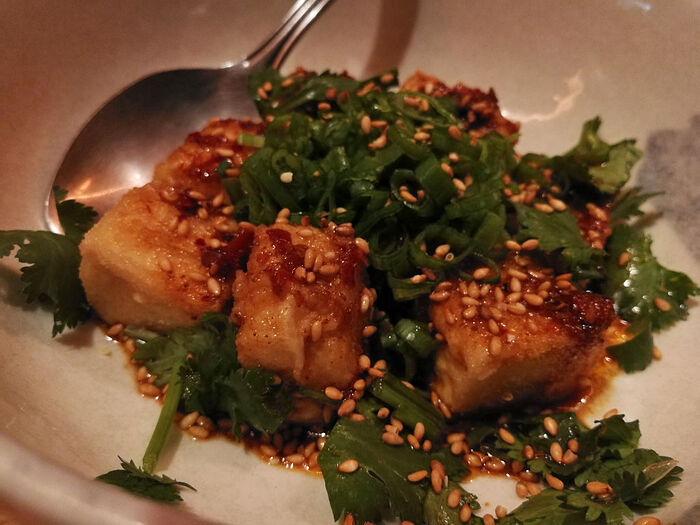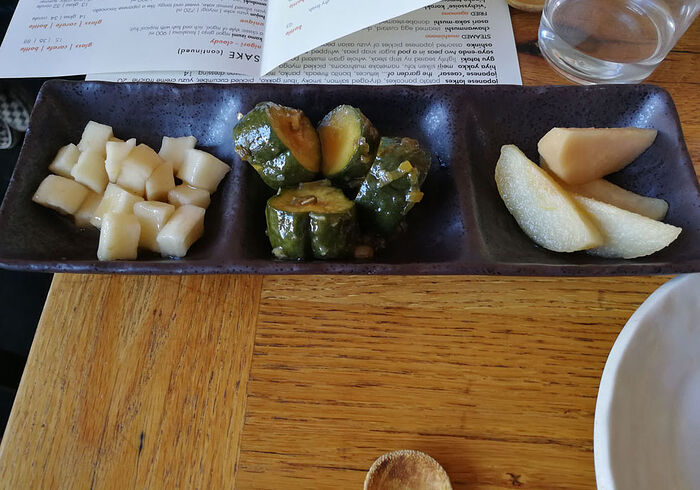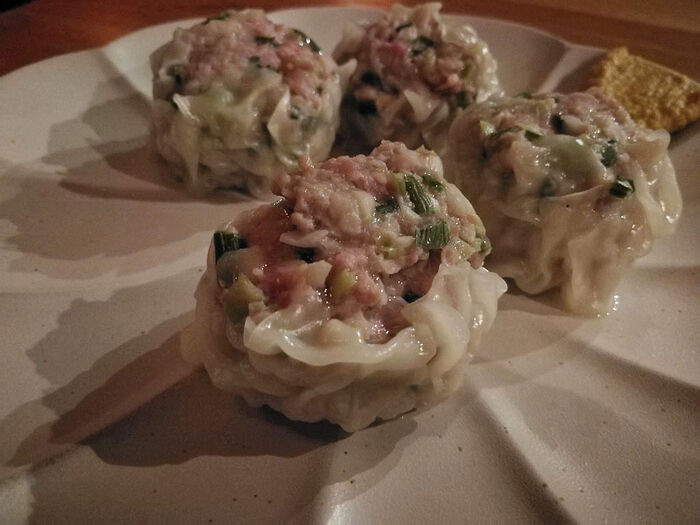Japanese Sake can connote many things. For some, “Sake” might cause unpleasant memories of Sake Bombs tasting like gasoline to resurface. For others, it might be that equally awful taste of mass-produced Box Sake like Sho Chiku Bai (a.k.a., the “Bud Light” of Sake) ![]() that was your first and only experience that turned you off from Sake forever. Still for others, Sake might be intimidating, a list of long descriptors like “Honjozo” “Junmai” “Daiginjo” “Shizuku” “Muroka” etc., and with Japanese names, it might make ordering a bottle too much of a risk.
that was your first and only experience that turned you off from Sake forever. Still for others, Sake might be intimidating, a list of long descriptors like “Honjozo” “Junmai” “Daiginjo” “Shizuku” “Muroka” etc., and with Japanese names, it might make ordering a bottle too much of a risk.
That’s what makes Ototo Sake Bar (and sister restaurant next door, Tsubaki) so wonderful, all thanks in part to Owner-Sommelier Courtney Kaplan. Sommelier Kaplan might be recognizable to some for her excellent work previously at Bestia (with great Wine recommendations), but with her independent endeavor (along with Chef Charles Namba), you now have access to a stunning, exciting and always inviting Sake Menu, and Sommelier Kaplan always makes it accessible.
(Note: This covers the first few visits, pre-pandemic, along with visits afterwards for To-Go offerings.)
The pair originally started with Tsubaki Restaurant, which is more of an Izakaya (or Japanese Pub), and while the food is passable, the Sake is the highlight, all with outstanding guidance from Courtney. With Ototo Sake Bar (only opened recently), they were able to focus on making a real Japanese Sake Bar, serious in exploring Sake, but always inviting, with some more casual Japanese dishes / snacks on that side.
One look at the cover of the Ototo Sake Menu and you can see how accessible Sommelier Kaplan is making the world of Japanese Sake:
Open up the menu, and you’ll see simple, beautiful introductions to each major type of Sake, inviting you to try something from the menu. And it’s hard not to try something after reading so many intriguing descriptions and tasting notes from Sommelier Kaplan.
Or if you don’t feel like reading, just ask her for advice and recommendations and sit back and enjoy the impromptu Sake education you are getting. ![]()
Akitabare - Suirakuten - Daiginjo Sake (Akita, Japan):
Sommelier Kaplan introduces us to Akitabare Suirakuten, a 2 Year Aged, Shizuku (gravity-pressed) Sake. This was aromatic, easy to drink and a nice start to our first visit. ![]()
Glancing over Ototo’s menu, and it’s a greatest hits of easy-to-handle small dishes, accessible things like Kara-Age (Japanese Fried Chicken), Nasu Dengaku (Grilled Japanese Eggplant with Saikyo Miso and Shiso and other items). We start with:
Kaki Fry (Panko Fried Oysters, Smoked Daikon Remoulade, Fennel Pollen):
These were OK. There was a nice light crunch with the Panko breading, the Oysters within were still quite tender and lightly briny.
Huchu Homare - Watari Bune 55 - Junmai Ginjo Sake (Ibaraki, Japan):
Another great recommendation, the Watari Bune 55 is standout in using an Heirloom Rice that actually went extinct before being revived in recent years(!). The Watari Bune is also one of the parent strains of Yamada Nishiki, one of the most celebrated Sake Rice. Lightly fruity, bright with a bit of some earthiness as well.
Chicken Katsu Sando (Fried Chicken Sandwich, Snowy Cabbage, Tonkatsu Sauce):
It is hard not to make comparisons to the more celebrated Katsu Sando (Tonkatsu Cutlet Sandwich) down the street at Konbi. Ototo’s turns out to be decent. It was clearly freshly made, but the Bread lacks the light crisp-crunch of a just toasted Bread, and the Chicken Katsu breading is sort of lightly crunchy, but also feels softened up by the Cabbage / steaming. Taste-wise, this was fine, and we’d order it again to give it another try.
Heiwa Shuzou - KID - Junmai Daiginjo Sake (Wakayama, Japan):
The easy to remember “KID” from Heiwa Shuzou is a wonderful standout! While you might expect some elegance with a Junmai Daiginjo, KID really stood out for us with its refreshing quality, some light fruit notes, and a really clean finish! Loved this. ![]()
We liked it so much, we enjoyed a 2nd bottle at Shibumi a few months later. ![]()
Katafune - Shiboritate - Tokubetsu Honjozo Nama Sake (Niigata, Japan):
While we’ve had Katafune Sake before, Courtney brought in their Shiboritate Nama version (Fresh-Pressed, Unpasteurized). Yet another interesting offering on this first visit.
2nd Visit:
While you’re able to get some great insight and advice from Sommelier Kaplan on any visit, one of the ways she’s been working hard to advance the appreciation of Sake to the area is with her new “Sunday Sake School” program:
Just look at the design! How could you not want to sign up for class?! ![]() On Sundays, Sommelier Kaplan will choose a topic / theme and introduce participants to a flight of Japanese Sake based on that theme. One of the first Sunday Sake Schools we tried was a study of Muroka Nama Genshu (Not Charcoal Filtered, Unpasteurized, Not Diluted) Sake from Floating World Distributor.
On Sundays, Sommelier Kaplan will choose a topic / theme and introduce participants to a flight of Japanese Sake based on that theme. One of the first Sunday Sake Schools we tried was a study of Muroka Nama Genshu (Not Charcoal Filtered, Unpasteurized, Not Diluted) Sake from Floating World Distributor.
Ever since our good friend recommended Shichida Spring release of their Muroka Nama Genshu Sake (one of the most interesting, fun Seasonal Sake to look forward to every year), we’ve been on a mission to try more of this style when possible, so this Sunday Sake School was perfect. ![]()
Kaze no Mori - Wind of the Woods - Junmai Muroka Nama Genshu Sake (Nara, Japan):

I’m such a fan of Kaze no Mori’s brewery, Yucho Shuzo, which has been making Sake for over 300 years(!). ![]() Their Takacho Bodaimoto remains one of the best finds around. Thankfully their Kaze no Mori “Wind of the Woods” Junmai Muroka Nama Genshu is also wonderful! There’s a light effervescence, tingly, refreshing and just so good to drink.
Their Takacho Bodaimoto remains one of the best finds around. Thankfully their Kaze no Mori “Wind of the Woods” Junmai Muroka Nama Genshu is also wonderful! There’s a light effervescence, tingly, refreshing and just so good to drink. ![]() This was probably our favorite on this visit.
This was probably our favorite on this visit.
Mutemuka - Mutemuka - Junmai Muroka Nama Genshu Sake (Kochi, Japan):
This one was also fun, a different taste of Muroka Nama Genshu compared to the previous Kaze no Mori. This was a bit more earthy, still fun and totally different compared to most Junmai Ginjo / Daiginjos we’ve had.
Haku Gyokko - Fragrant Jewel - Yamahai Muroka Nama Genshu Sake (Chiba, Japan):
Made with 100% Yamada Nishiki Rice, this was another Muroka Nama Genshu that was quite fun to drink. It’s been awhile since this first Sake School, but I remembered enjoying this more than the Mutemuka, but not as much as the Kaze no Mori (1st one).
Akishika - Okarakuchi - Junmai Muroka Nama Genshu Sake (Osaka, Japan):
True to its name, the Akishika Okarakuchi was definitely a very dry finish. The fun part of this Sake was the Muroka Nama Genshu (Unfiltered, Unpasteurized, Non-Diluted) aspect, allowing for bigger flavors to come through than what one might expect from Sake.
Overall, it was a fun Sunday Sake School, informative, interesting and we couldn’t wait to attend more “classes” in the future. ![]()
Gozenshu - Bodaimoto - Junmai Nigori Sake (Okayama, Japan):
This was only the 2nd Sake that we’ve ever tried using the ancient Bodaimoto method to brew Sake. But it tasted absolutely nothing like the Takacho Bodaimoto. But it had lots of complex layers of flavors, almost peppery.
3rd Visit:
On this 3rd visit to Ototo, we were treated to another wonderful evening of Sake exploration, starting with:
Kaze no Mori - Wind of the Woods - Alpha Type 3 - Junmai Daiginjo Sake (Nara, Japan):
Another offering from Yucho Shuzo, we really enjoyed the Kaze no Mori “Wind of the Woods” Muroka Nama Genshu, so we were excited to see what their polished Junmai Daiginjo expression would be like. This one also had some light effervescence, fizzy, fun, light melon-like fruitiness, great finish. ![]()
Goma-Ae (Haricots Verts, Creamy Sesame Dressing, Chili Garlic):
This was a good, simple starter. A bit bolder with Chef Namba’s addition of a crunchy Chili Garlic, which overpowered the Sesame flavors, which is what you might expect, but still a good Vegetable starter to the meal.
Takachiyo - 59 - Chapter Five - Morinokumasan - Junmai Ginjo Sake (Niigata, Japan):
If you ever get a chance to try the Takachiyo 59 series, you’ll be rewarded with a really interesting exploration of Sake. Takachiyo 59 series is essentially a release of a series of Sake “Chapters”, where each Chapter’s bottle is brewed exactly the same way, except the Rice used in each Chapter is different(!). So it’s a neat way to look at how important Rice is in making Sake.
We really enjoyed Chapter 2 and 3. I think Aiyama Rice is my favorite in the Chapters so far. ![]() Chapter 5 uses the Morinokumasan Rice Grain. This one tasted more heavy, complex, minerally.
Chapter 5 uses the Morinokumasan Rice Grain. This one tasted more heavy, complex, minerally.
Oden (Daikon, Pork Baby Back Ribs, Soft Egg Stewed in Dashi Broth):
Oden is one of those soul-warming comfort foods found in Japan, and perfect for chillier nights. We didn’t have high hopes for Ototo’s attempt at Oden (given Tsubaki’s menu), however, it seems that with Ototo going to simpler OG Japanese comfort foods, it uncomplicates things and the food is more enjoyable here.
The Oden Dashi Broth doesn’t come close to the sublime Broth from Chef Masakazu Sasaki from Torihei OG, but it was warming and was tasty enough.
The Stewed Pork Ribs were fine. Soft, tender, fall-off-the bone. ![]()
The Hanjyukku Tamago (Half-Boiled Egg) was also nicely done, but could’ve used a bit more flavor seeping into each bite, and the Daikon was fine (also a far cry from the greatness from Sasaki-san), but on this chilly night? It was good and comforting along with some delicious Sake.
Chicken Katsu Sando (Fried Chicken Sandwich, Snowy Cabbage, Tonkatsu Sauce):
Trying their Chicken Katsu (Cutlet) Sandwich again, the kitchen staff improved the execution. This one was slightly more crisped, but still a bit on the soft side, with more pronounced flavors. A good, simple dish to get some sustenance while you enjoy the Sake exploration.
Takacho - Regal Hawk - Bodaimoto Junmai Muroka Genshu Sake (Nara, Japan):
We had been raving to Sommelier Kaplan about Takacho (Regal Hawk) after enjoying 2 bottles at Shibumi the previous year, and she had shared that she also really enjoyed this Sake and got it in stock on this visit. Must order. ![]()
The unique thing about Takacho is that it uses the Bodaimoto method of brewing Sake, which was an ancient method dating back over 500 years ago in Japan(!). ![]() This method is very rare nowadays, and one taste of the Takacho and you can appreciate just how wild and different it is:
This method is very rare nowadays, and one taste of the Takacho and you can appreciate just how wild and different it is:
There’s an initial natural sweetness, layers of various fruit notes, but it’s also very complex. It truly is one interesting layer after another, after another. An absolute party! ![]()
![]()
![]()
If you’re wanting to try a very unique, fun Sake, look no further than Takacho “Regal Hawk”. Stunning and one of my favorite Sake of recent years! ![]()
Ode to Mos Burger (Japanese Chili, Shredded Iceberg, Yuzu Thousand Island Dressing, Tomato):
I have not tried the original Mos Burger in Japan, so I can’t speak to its authenticity or closeness in taste, but this was Chef Namba’s tribute to Japan’s Mos Burger chain, but with elevated ingredients. Taking a bite:
This is probably one of the best items on the Ototo (and Tsubaki) menu. ![]() Is it really just a glorified Chili Burger? Yes. But it was delicious, a good Japanese Chili (which did taste similar to a good American Chili), quality Beef patty cooked medium, messy and tasty.
Is it really just a glorified Chili Burger? Yes. But it was delicious, a good Japanese Chili (which did taste similar to a good American Chili), quality Beef patty cooked medium, messy and tasty. ![]()
And how potent is the Takacho “Regal Hawk” Bodaimoto Sake? It stood up to this Chili Burger monstrosity and paired nicely. ![]()
4th Visit:
This was a recent visit during COVID-19, and Ototo is closed for indoor dining (like the rest of the country). There are Sake bottles on display near the front entrance in the hopes that folks might purchase some good bottles to enjoy at home, and also help support the hurting Sake industry.
Kaze no Mori - Wind of the Woods - Black Label - Junmai Nama Genshu Sake (Nara, Japan):
In a show of support and to explore the last of the Kaze no Mori (Wind of the Woods) lineup, Sommelier Kaplan had gotten in their Black Label, which is a Junmai Nama Genshu Sake. I have not opened it up, hoping to enjoy it this Christmas, but will report back when I do. Can’t wait. ![]()
We also picked up a few more bottles of Sake (including the Takacho “Regal Hawk”) to enjoy or give away as gifts.
6th Visit - Tsubaki Restaurant:
With both restaurants being next door to each other and the same owners, when outdoor dining was allowed again (briefly), the limited few tables outside both restaurants were turned into “outdoor dining for Tsubaki”, and we wanted to stop by and show support (and enjoy more Sake). ![]()
The tables were very far apart, and there were only 4 tables total, so it generally felt safe in those conditions.
We let Sommelier Kaplan guide us through the evening, and we begin with:
Chikurin - Karoyaka - Junmai Ginjo Sake (Okayama, Japan):

Fascinating! Sommelier Kaplan talks about how this is a Sake Brewer that grows their own Rice (Yamada Nishiki) and brews their Sake as well. Taste-wise, light sweetness, light fruit, but there’s a complexity here that you don’t find with many Daiginjos (this is a Ginjo). Wonderful! ![]()
Crab Fried Rice:
Tsubaki’s Crab Fried Rice normally comes with Butter added in, an unnecessary complication to the purity of good wok-fired Fried Rice. We asked them to omit the Butter, and the result was a passable, tasty Crab Rice that’s not really wok-fried in taste, but delicious otherwise.
Shichida - Hiyaoroshi - Junmai Sake (Saga, Japan):
Shichida’s Autumn Release Sake is their beautiful red labelled Hiyaoroshi, which is a style of Sake released in the Fall season. This year’s release is made with Aiyama Rice, and after tasting this, I can say, I love Aiyama Rice! ![]() Absolutely gorgeous, rich, complex, deeper, earthier fruit notes. A stunner! We liked it more than last year’s Shichida Hiyaoroshi, and the rice varietal might be why? Worth tracking down if you can find it!
Absolutely gorgeous, rich, complex, deeper, earthier fruit notes. A stunner! We liked it more than last year’s Shichida Hiyaoroshi, and the rice varietal might be why? Worth tracking down if you can find it! ![]()
Noguchi Naohiko Sake Institute - Honjozo Muroka Nama Genshu Sake (Ishikawa, Japan):

I was not familiar with Noguchi Naohiko, but Sommelier Kaplan mentions that he’s like a Sake Brewmaster God. ![]() He’s helped other famous brewers for years and decided to go out and make his own, hence the name.
He’s helped other famous brewers for years and decided to go out and make his own, hence the name.
This first bottle “only” a Honjozo Sake (where a small amount of distilled alcohol is added in while making Sake), it’s not as “glamorous” as its more celebrated cousins like Junmai Ginjo or Junmai Daiginjo, but with this first expression I can only say:
Stunning.
There is nothing like it that I’ve tasted! ![]()
![]() It is a beautiful Sake, it’s bold, deep fruit layers, maybe even Cinnamon and yet it finishes beautifully and clean. I could not stop thinking about it! A must try for Sake lovers.
It is a beautiful Sake, it’s bold, deep fruit layers, maybe even Cinnamon and yet it finishes beautifully and clean. I could not stop thinking about it! A must try for Sake lovers. ![]()
Tonkatsu Set (Deep Fried Pork Cutlet over Rice):
A solid Tonkatsu. It doesn’t come close to Tonkatsu Specialist Kaguya, but so far on the Tsubaki menu this was an improvement from previous visits.
Crab Cream Croquette:
Their take on Korokke (Croquettes), this was fine. Too much Cream, not enough Kani (Crab) taste.
Sempuku Shinriki - Junmai 85 Sake (Hiroshima, Japan):
This was a really interesting recommendation from Sommelier Kaplan, a Junmai Sake whose Rice is milled to only 85%. It feels like the opposite of those crazy Daiginjos that are in a race to mill their Rice to as low a percentage as possible.
But the taste was fun. Also really bold, wild, fruity at times, with a longer tail.
Overall, Ototo Sake Bar (and Tsubaki) has developed into a place to really enjoy and explore the world of Japanese Sake. While on every one of our visits to both places over the years, the vast majority of tables did not order Sake (sad), it would be wise for visitors who want to learn even a little bit about how wonderful Sake can be, to ask Sommelier Courtney Kaplan for some recommendations and begin there.
Courtney is always so knowledgeable and informative, never making you feel like you need to know some basics to be able to enjoy. Let her guide you through the regions of Japan, through the various types of Sake and be prepared to have fun, enjoy and be amazed at how glorious Sake can be. ![]()
With the restaurant industry hurting, buying some Sake from Ototo (or your local neighborhood shops) not only helps the local business owners, but also helps out the Sake industry, which from various reports sounds like it’s hurting even worse than some (as Sake sales are down dramatically.
Sommelier Kaplan is arguably the best Sake Sommelier we have in the City of Angels, and it’s always fun to find out about some new Sake you’ve never tried before and appreciate what the brewers were trying to achieve. So enjoy some Sake, sip and relax this holiday season.
Ototo Sake Bar (& Tsubaki)
1360 Allison Ave.
Los Angeles, CA 90026
Tel: (213) 784-7930
Update 1:
Virtual Sake School at Ototo! ![]()
For this particular visit, Owner-Sommelier Courtney Kaplan was going to host a Virtual Sake School on Japanese Sake Brewery Heiwa Shuzo (Wakayama, Japan). According to Sommelier Kaplan, Heiwa Shuzo was founded in 1928, but only really made Sake in earnest starting in the 1950’s after WWII. They took on the name “Heiwa”, which means “Peace” to mark the end of World War II.
And apparently it wasn’t until the 1990’s that the young son that was heir to Heiwa Shuzo returned to the brewery to help revitalize the family’s Sake business (which prior to that was making inexpensive carton Sake).
For this tasting, the special treat was being able to meet Heiwa Shuzo’s Toji (Master Brewer)! ![]() Courtney was able to arrange for the Toji to not only talk about the Sake, but also give us a tour of Heiwa Shuzo online! Very cool.
Courtney was able to arrange for the Toji to not only talk about the Sake, but also give us a tour of Heiwa Shuzo online! Very cool. ![]() We got to try 4 bottles in their lineup.
We got to try 4 bottles in their lineup.
KID - Junmai Sake:
Refreshing, lightly sweet, a bit more rustic (in a good way) compared to the rest of the lineup. Delicious. ![]()
KID - Junmai Daiginjo Sake
As expected their Junmai Daiginjo was fruitier, floral, some sweetness, and finished so cleanly. ![]()
KID - Junmai Ginjo Shiboritate Sake
A Winter release, Shiboritate is basically unaged Sake, fresh from the presses. This was hard to describe as in a bit of unfortunate circumstance, the plastic container for this pour had a weird chemical smell to it! ![]() I chalk it up to a fluke as the rest of the containers were fine, darn.
I chalk it up to a fluke as the rest of the containers were fine, darn.
KID - Junmai Ginjo Hiyaoroshi Sake
An Autumn Sake, left to mature through the Summer and then released in the Autumn, this results in a taste that’s rounder, more complex, still fruity, with sweetness, and tasty! ![]()
Fried Chicken Sandwich (Kara-age Style Fried Jidori Chicken, Yuzu Kosho Slaw, Daikon Pickles, Brioche Sesame Bun):
Given the mediocrity of Tsubaki’s menu, we had low expectations here, but their new To-Go Menu (during COVID-19) is simplified food, and it seems to have helped with execution. This was a solid Fried Chicken Sandwich. Definitely edible, the Fried Jidori Chicken isn’t as super crispy-crunchy as a usual American Fried Chicken Sandwich, but had a light crunch to it. The weak link was the overall taste: It was fine, but tasted like a standard-ish Kara-age style seasoning, just with a Sesame Seed Bun.
Japanese Curry Rice:
The server confirmed that they make their own Curry in-house, but the base did taste like S&B or House as the basis, but with additional enhancements on top. Still, the Beef morsels and overall Curry Sauce was aromatic, zesty, with a Curry Powder driven front note, some beefiness from the cooked down Beef within. I’d order this again if I was in the area for lunch and hankering for Japanese Curry. ![]()
Another Visit:
Finally just this past week, Tsubaki / Ototo announced that they just got in Shichida’s famous Spring Sake! Time for a visit! ![]()
Shichida - (Spring Release) Muroka Nama Genshu Junmai Ginjo Sake (Saga, Japan):
Now an annual celebration, when you see Shichida’s Spring Muroka Nama Genshu Junmai Ginjo Sake in your local restaurants, it marks the arrival of Spring! ![]() Taking a sip…
Taking a sip…
Wild, sweet, yeasty, naturally effervescent! It’s like a party in your mouth, so many flavors and layers and it’s so expressive! ![]() We completely missed last year’s Shichida Spring release because the pandemic had just hit and everyone was in lockdown. So it’s been 2 years(!) since we last enjoyed this amazing Sake.
We completely missed last year’s Shichida Spring release because the pandemic had just hit and everyone was in lockdown. So it’s been 2 years(!) since we last enjoyed this amazing Sake.
Definitely one of the best Sake we’ve had this year, and as enjoyable as the last Shichida Spring Muroka Nama Genshu we tried 2 years ago. ![]()
Soriresu (Two Skewers Charcoal Grilled Chicken Oysters, Yuzu Kosho):
Wanting to see how the kitchen progressed now that they were back open for outdoor dining, we decided to try a few dishes along with the excellent Sake. The Soriresu were 2 Yakitori Skewers of Grilled Chicken Oysters. These were too salty, oversalted in seasoning and then the Yuzu Kosho inherently is salty as well. The lack of understanding here sunk the dish. ![]() The actual flavor also lacked the depth of great Binchotan (Japanese Charcoal) Yakitori.
The actual flavor also lacked the depth of great Binchotan (Japanese Charcoal) Yakitori.
Yoshidagura - “U-nique!” - Yamahai Junmai Sake (Ishikawa, Japan):
Thankfully things bounced back quickly with yet another stunning Sake recommendation from Sommelier Kaplan: Yoshidagura “U-nique!” Yamahai Junmai Sake. It appears Yoshidagura is from the son of excellent Japanese Sake Brewery Tedorigawa(!), ![]() which is the makers of one of my favorite QPR selections, Tedorigawa Kinka “Gold Blossom” Nama Daiginjo Sake, which is super delicious, easy to drink and sells for only ~$43 per bottle!
which is the makers of one of my favorite QPR selections, Tedorigawa Kinka “Gold Blossom” Nama Daiginjo Sake, which is super delicious, easy to drink and sells for only ~$43 per bottle! ![]()
So the son of the brewery released a new Yamahai under his own label (but still brewed at Tedorigawa according to Courtney) called “Yoshidagura”. This Yamahai-style Sake is totally different from Tedorigawa’s Yamahai that we’ve had multiple times. This one is definitely “unique” as it’s bright, summery, refreshing, lightly sweet. Excellent! ![]()
Ikura Ochazuke (Steamed Koshihikari Rice, House-Cured Salmon Roe, Mitsuba, Wasabi, Genmai Matcha Wasabi Broth):
Thankfully their Ochazuke turned out to be good and one of the safe items to order on the menu (it’s hard to mess up Steamed Rice, Ikura (Salmon Roe) and Hot Tea poured on top). ![]() This was tasty though, as the Ikura (Salmon Roe) and Steamed Rice, with some of the Genmai Matcha Broth was perfect to keep us warm in the chilly outdoors. I’d order this again.
This was tasty though, as the Ikura (Salmon Roe) and Steamed Rice, with some of the Genmai Matcha Broth was perfect to keep us warm in the chilly outdoors. I’d order this again. ![]()
(Off-Menu) Takeno Tsuyu - Hakurosuishu - “Moon Mountain’s Dew” - Muroka Nama Genshu Junmai Ginjo Sake (Yamagata, Japan):
And in a stunning surprise, Courtney brought out something not on the menu, but also fitting this Spring season: Takeno Tsuyu (quickly becoming a favorite thanks to @ColinMorey)'s Hakurosuishu - “Moon Mountain’s Dew” release of a Muroka Nama Genshu(!) Junmai Ginjo Sake. ![]() I’d never heard of this one before (having tried their Junmai Daiginjo last year).
I’d never heard of this one before (having tried their Junmai Daiginjo last year).
This was wild with big flavors, and not overly sweet (like their Junmai Daiginjo), but it finished super crisp and clean! Outstanding! ![]() We really enjoyed their simple Takeno Tsuyu Junmai at Torihei, but this Muroka Nama Genshu is a lot of fun.
We really enjoyed their simple Takeno Tsuyu Junmai at Torihei, but this Muroka Nama Genshu is a lot of fun. ![]()
Tsubaki and Ototo continue to provide an important gateway for folks interested in tasting and learning more about Japanese Sake, thanks to Owner-Sommelier Courtney Kaplan. She continues to shine here, bringing over some really interesting, not as commonly found Sake, where too many of our local Japanese restaurants just carry the big brand names these days.
With Spring arriving, there’s never been a better time to try some delicious Sake, with all of the Spring limited releases. If you can only try one, be sure to try Shichida’s Spring Muroka Nama Genshu Junmai Ginjo Sake. It will show a side of “Sake” that you’ve experienced before if you’re mainly drinking Junmai Ginjo / Daiginjo’s from the big brands.
After that, just sit back and ask Courtney for additional recommendations and enjoy the wonderful world of Japanese Sake with interesting insight from the outstanding Sommelier.
Ototo Sake Bar & Tsubaki
1360 Allison Ave.
Los Angeles, CA 90026
Tel: (213) 784-7930
Note: Outdoor Dining is currently being done through Tsubaki.
Update 1: Fantastic Noguchi Naohiko Sake Institute bottles 2022, also improved food at Ototo (Japanese Potato Salad and that Buta Shumai!) and more.


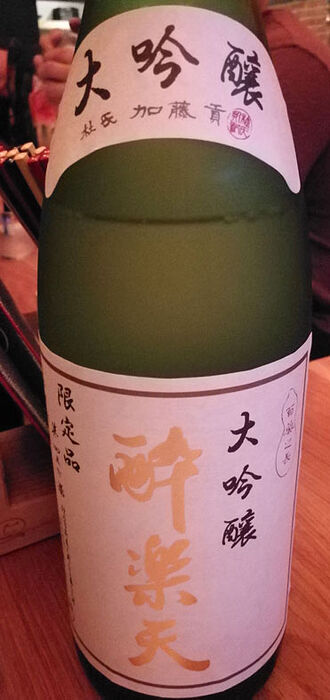














































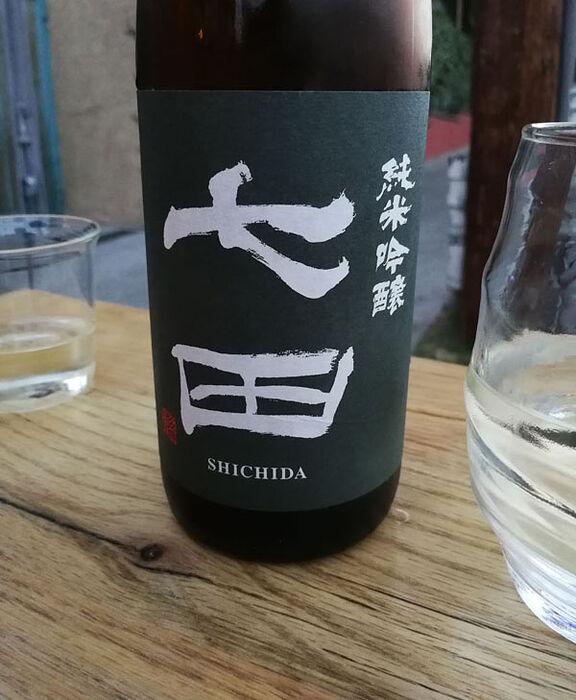





 I defer to you and any other folks who’ve tried Mos Burger.
I defer to you and any other folks who’ve tried Mos Burger. 









































